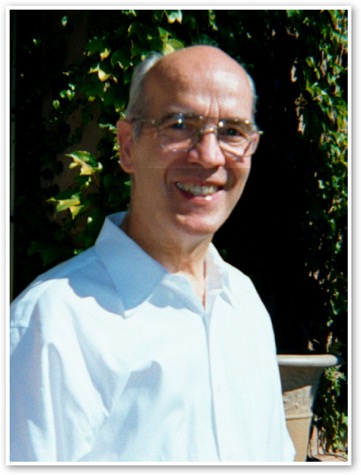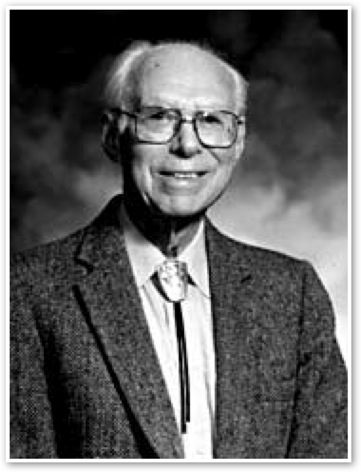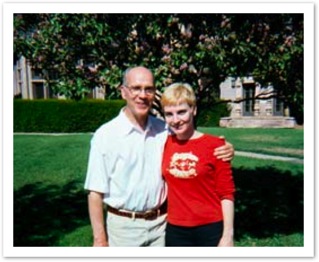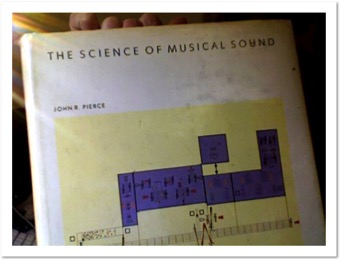Bohlen-Pierce Scale
Research
I wrote this research paper for an Advanced Acoustics class at New York University in the Spring of 2001 while obtaining my masters degree in Music Technology. It included listening tests with nine subjects who collectively had a wide variety of musical training. Some were beginners and some were long-time professional musicians.The main Bohlen-Pierce Scale website, formerly run by Heinz Bohlen: http://www.huygens-fokker.org/bpsite
Other research: Tonality, Harmonic Progressions, and Voice Leading with the Bohlen-Pierce Scale – Dustin Schallert (2012)
Modes and Chords

Some modes and chords are mapped out here, which you may find useful.
Music
Elaine Walker:Love Song (2011, ZIA Drum N Space)
Greater Good (2011, ZIA Drum N Space)
Love Song (2008, performance by 17 Tone Piano Project. Thanks guys!)
Stick Men (1992, ZIA v1.5)
Dr. Richard Boulanger
I Know of No Geometry
Solemn Song for Evening (live performance at the Bohlen-Pierce Symposium 2010)
Sevish
Orbital (Bohlen-Pierce beat)
Mashroon (microtonal drum & bass, Bohlen Pierce scale)
Find more music on the main Bohlen-Pierce Scale website.
Videos
Bohlen-Pierce Scale Symposium, Boston 2010: Videos of Performances and LecturesMy lecture at the Bohlen-Pierce Scale Symposium, Boston 2010: 5 Videos
AXIS keyboard for the Bohlen-Pierce Scale: 11 Videos
Building a Bohlen-Pierce Scale Vertical Keyboard: 1 Video
Keyboards


Bohlen-Pierce keyboards are discussed here, as well as featured in the above videos.
The Two Inventors of the Bohlen-Pierce Scale

Heinz Bohlen at Stanford, 1935–2016
(Picture by Elaine Walker, 2001)

John Robinson Pierce, 1910–2002
(Picture courtesy of CCRMA, Stanford, CA)
The story of the Bohlen-Pierce Scale and it's inventors is a bittersweet one. Sadly, the two microwave engineers who invented the Scale independently six years apart, never met even though they both lived in the San Francisco area for a number of years. When John Pierce passed away in 2002, Heinz's dream of meeting him and discussing their co-invented scale in person, died with him. Heinz was also a fan of John Pierce because of his fame in the microwave engineering world. John Pierce is credited for inventing the idea of the communication satellite. In turn, John Pierce may have been envious that Heinz Bohlen invented the BP Scale six years before he did.
It all started in the early 1970s when Heinz Bohlen became curious as to why musicians always use the same 12 note per octave tuning. After getting some unsatisfactory answers from musicians, he took it upon himself to research music and tonality. It was finally the understanding of combination tones that lead him to believe he could use the same method that lead to the 12 tone equal temperament, to devise another tuning from a different framework. He understood that the 12 tone scale was based around the a major triad, the inversion, and then filling in the gaps. So, he started with a new triad that was very harmonically pure, but not contained within the normal 12 tone framework. He made the stunning discovery that a scale of thirteen almost equal steps within the framework of an octave and a fifth (which John Pierce later dubbed as a tritave) contained this very pure triad. He recognized that this tuning shared a duality with the traditional Western 12 tone tuning, it had harmonic value, and that it would be a valid compositional tool.
Amazingly, during the same time frame, another man named Kees van Prooijen had independently invented the BP Scale during his research in generic equal temperaments. But even more amazingly, a second microwave engineer named John R. Pierce made the same discovery, six years later. He arrived at the tuning using a different method, but for the same reason – Curiosity. Leave it to microwave engineers to invent a tuning with no octaves! When John Pierce realized it had already been invented by Heinz Bohlen, the tuning was dubbed the "Bohlen-Pierce Scale. He was apparently unaware of Kees van Proojijen. Coincidentally, John Pierce wrote "The Science of Musical Sound", which was my favorite childhood coffee table book. When my professor at Berklee College of Music, Dr. Boulanger, introduced me to the BP Scale in 1991, I knew the name John R. Pierce sounded familiar. That XMas I found the book in my parents living room and remembered how I loved the book when I was younger.
I had the pleasure of meeting Heinz Bohlen in 2001 in San Jose where he lived when I was on a trip to visit Stanford. We both ventured to Stanford looking for Max Mathews (the "Father of computer music"), but he was not there that week. We had hopes of having a grand reunion of Max Mathews, John Pierce, Heinz Bohlen, and myself. Dr. Richard Boulanger has also worked extensively with Max Mathews and John Pierce on Bohlen-Pierce Scale music and research. He informed me that John Pierce was in the hospital with Alzheimer's and was not taking visitors. Alas, the reunion never happened, but I found Heinz Bohlen to be delightful company over sushi. He took a great interest in my Chaos Melody Theory research and we talked about chaos theory more than the BP Scale! Heinz and I have kept in touch and remained friends ever since. – EW
Some background on the Bohlen-Pierce Scale and its inventors

Heinz and Elaine at Stanford, 2001

The Science of Musical Sound was my favorite childhood "coffee table" book. It's a coincidence. No joke!